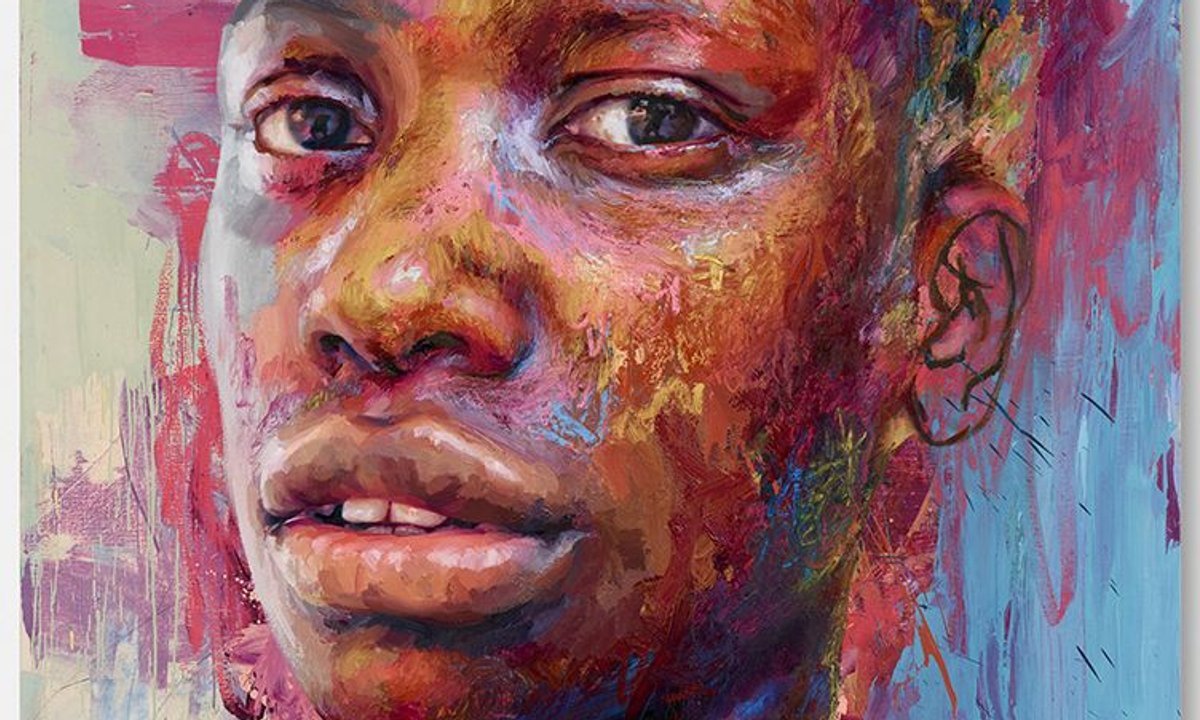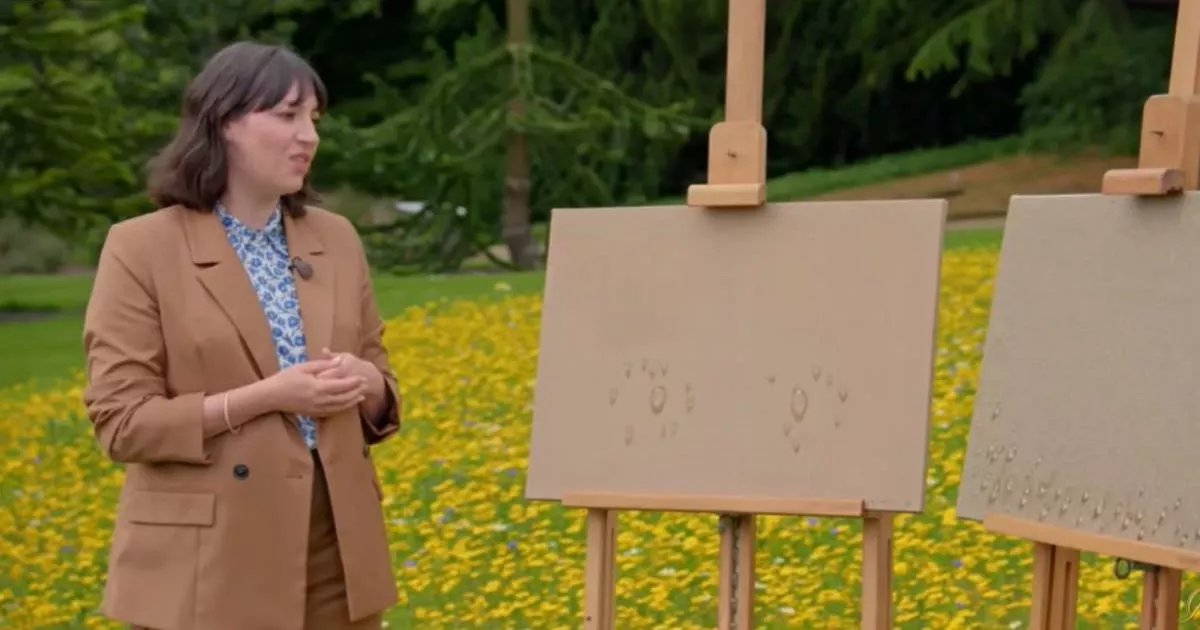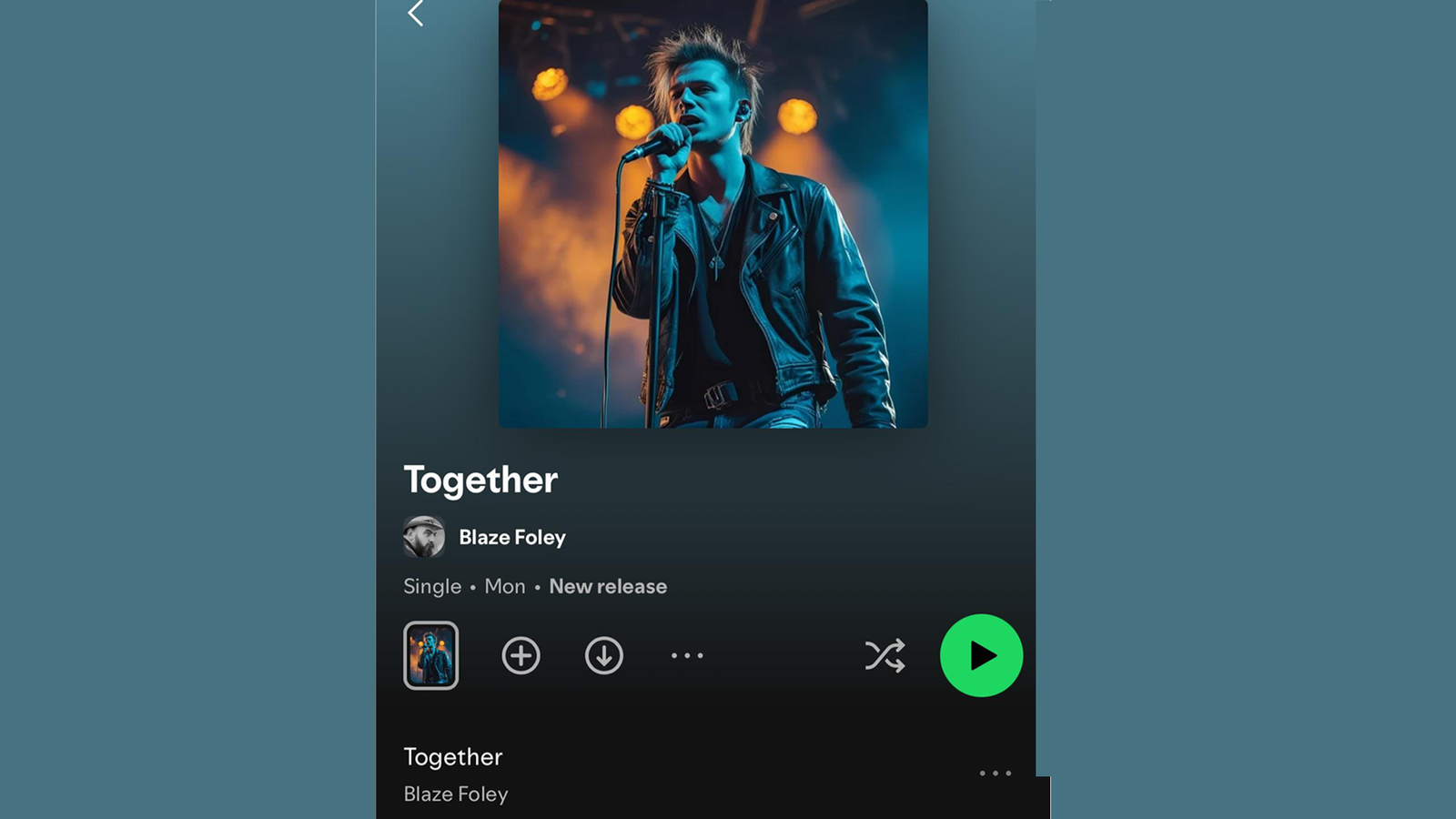This article is part of an ongoing series “Dispatches from Afghanistan” profiling Afghan artists and their experiences since the rise of the Taliban. Find all of the profiles so far here.
It had taken Mina and her family from 1.30am until 8am to walk the short distance through thousands of people gathered outside Kabul airport’s Abbey Gate to the front of the crowd. The documentation provided to her by her contact was supposed to be sufficient to get her on an evacuation flight, if she could find them.
Mina, an Afghan contemporary artist, curator and cultural activist, held onto her baby tightly, taking a longer but safer route to reach the front so that she could avoid walking in the sewage water that covered most of the area. She found a small space on the sidelines of the chaos and, in the midst of the garbage, fed her baby. But the respite was short lived and the little breathing space Mina had found was soon covered with bodies, all pushing and shoving.
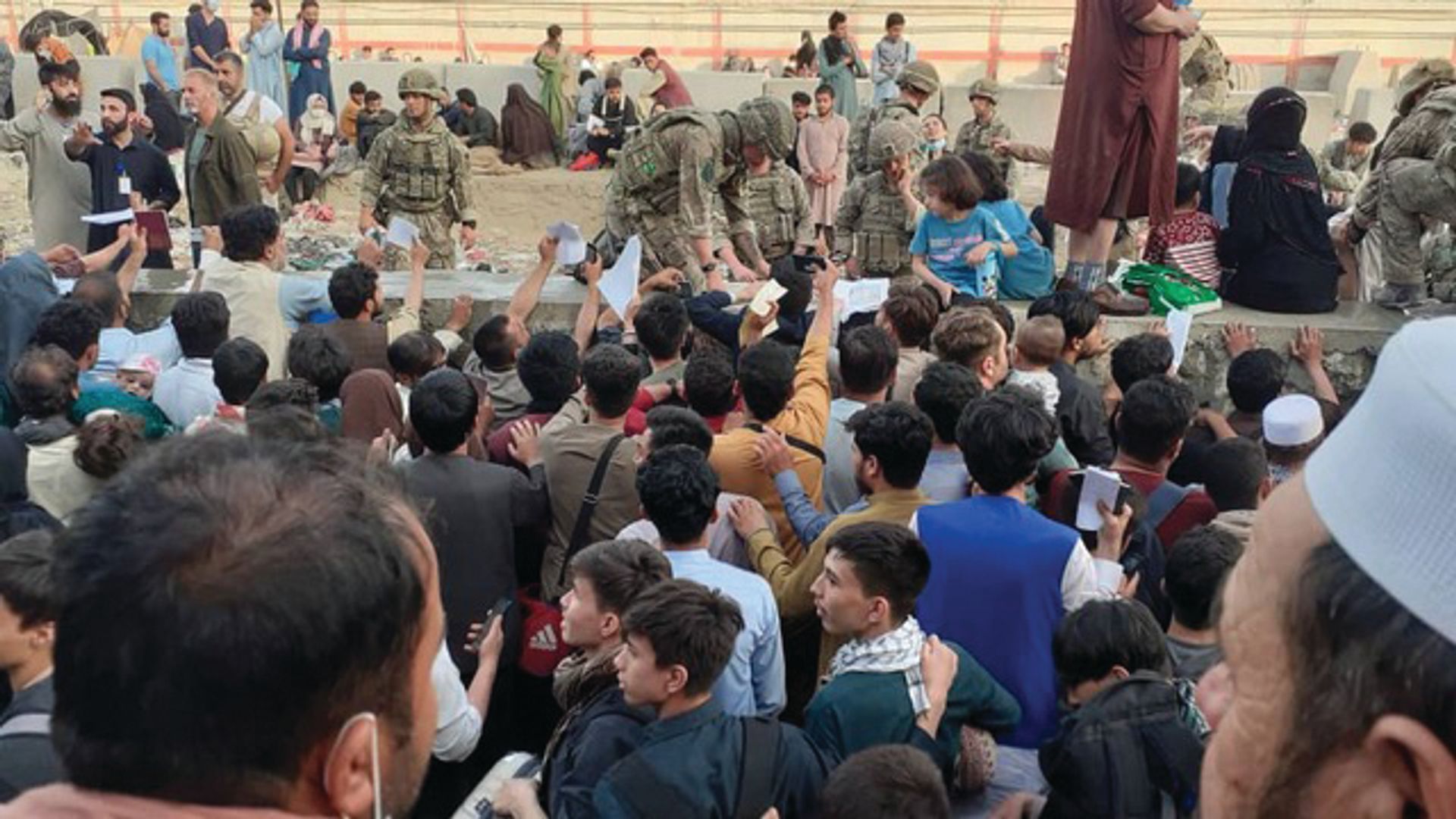
People pushing and crowding at Kabul airport’s Abbey Gate to show the soldiers their documents in the hopes of getting through and onto one of the evacuation flights. Photo courtesy of the artist
A moment of relief came when one of the soldiers manning the packed gate noticed Mina’s cries for help and took pity on her. “I pleaded: ‘Please, I will sit wherever you tell me to, just save my baby. Look at him he can’t breathe, he will die.’ He felt sorry for me. He checked my documents and let me in,” Mina tells The Art Newspaper from her hiding place in Kabul.
Once she passed the gate, joined by the rest of her family about an hour later, she waited for the contact but was unable to reach him. Finally around midnight, almost 24 hours after they arrived at the airport, they were unexpectedly escorted to the exit gate by a soldier, without any explanation. Two days later a suicide bomb at the gate killed at least 170 Afghans and 13 US military members.
Building up Afghanistan
Mina has spent the last 15 years working tirelessly to promote the growth of contemporary arts in Afghanistan. She worked closely with Western embassies to organise exhibitions that introduced Afghan art to the outside world. She held art seminars and virtual tours of established European museums to help the development of Afghan artists. When feasible, she and a few other artists spent their own funds to rent spaces and buy materials that young artists could use. “We [artists in her group] had come to the conclusion the work we did was fundamental in developing our society. A society needs art to develop just like it needs money, construction, water and food,” she says.
Advertising a simple exhibition with an audience could attract a suicide bomber since the fanatics viewed their activities as sinful, especially when women were involved. However, she and others navigated around the challenges and continued their work. “Take an exhibition we had, it created dialogue around the subjects we were tackling: issues of women, freedoms, security. Then the media picked up on it and it got more attention. This brought awareness and caused discussions, which was a positive development in society.”
In her paintings Mina tackles the struggles of women and the limitations imposed on them in Afghanistan. She uses bold colour to present their “screams, excitement and pain”. Mina says, like many other contemporary artists, her work is often not understood by ordinary Afghans, due to their lack of exposure to arts, who “expect art to be beautifully drawn landscapes”.
Who is thinking of art now?
Over the years despite having numerous opportunities to leave Afghanistan for a comfortable life in Europe or the US, Mina stayed and continued her work. On 15 August, the unthinkable happened when the Taliban took over Kabul. She bursts into tears thinking of her uncertain future in Afghanistan as an artist and the realisation that all her hard work to help change the social issues in her country have been wasted.
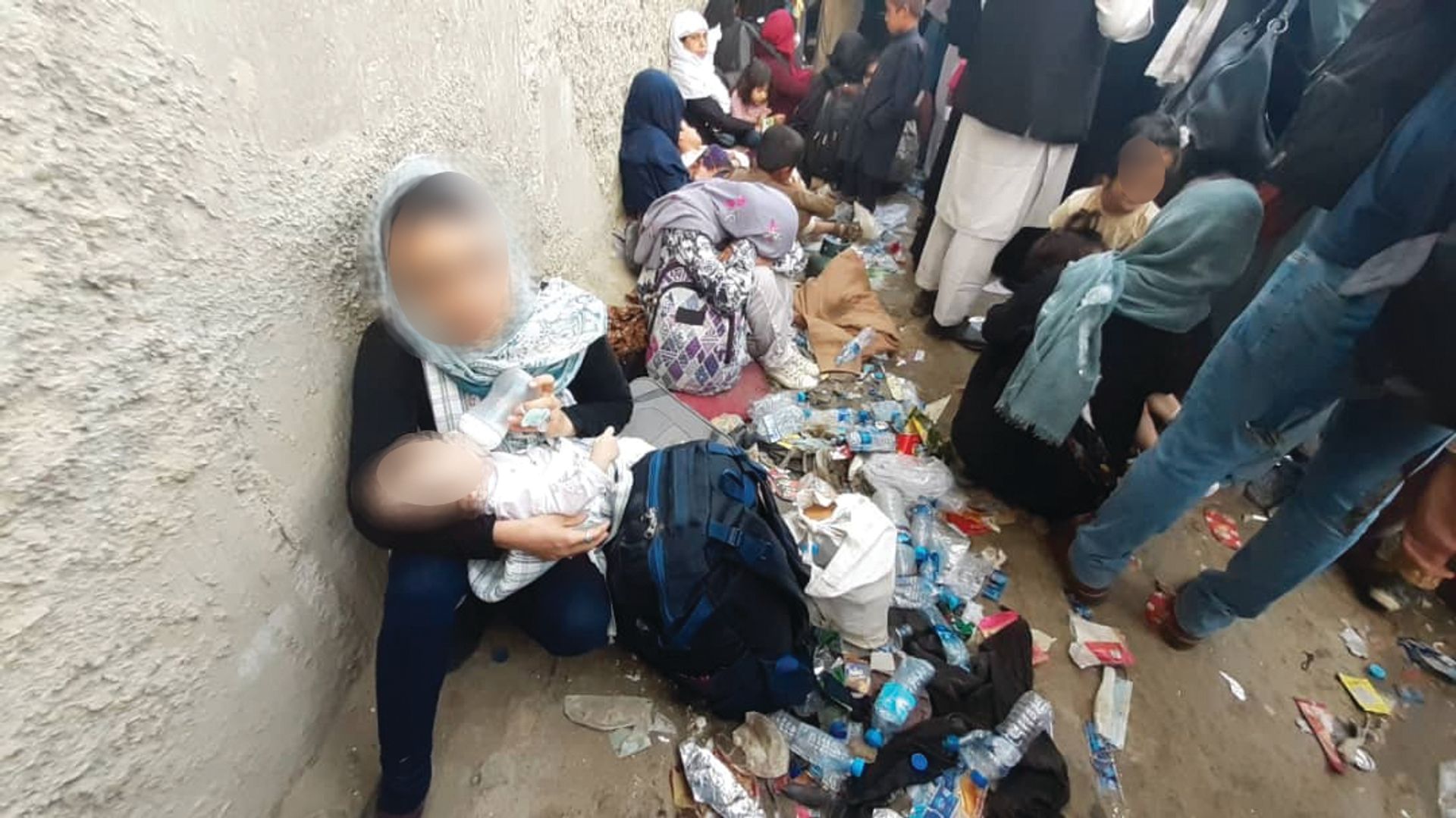
Mina managed to find a small space in the midst of the chaos and the garbage to briefly feed her baby whose health was badly affected after almost suffocating in the crowds. Courtesy of the artist
In preparation for a possible door to door search for people by the Taliban, which they were accused of carrying out around the country, Mina hid all her artwork. Any affiliation with Westerners or criticism of the Taliban could be used as evidence against her so she erased her social media, burned incriminating documents and tore out book pages. She left her home and went into hiding. With the banks closed since the Taliban takeover, she and her family, like many Afghans, have had no access to their savings and no income. Under the Taliban, she says, she will not be able to work in arts.
“Every day I receive messages from other artists asking: ‘What should we do? What advice do you have? We are in danger.’ I don’t have any answers for them and that’s extremely painful for me,” she says, sobbing. “Who is thinking of art now? No one. Everyone is only thinking of finding ways to save their lives,” she adds.
Unable to speak up about her plights in public for fear of being found, Mina’s only hope for escape from a dark future is for outsiders to stand up for her and other artists. “The very first threat we face is the threat to our lives. The second issue is the financial matter, there is no work for us here,” she says.
“The blow that our community has suffered has not been endured by any other group. The Taliban are being pressured on many issues like women’s rights and journalists’ safety, but there are no discussions about the rights and safety of artists. We can’t raise our voice here, we are in hiding, that’s why we ask for the international art community to speak for us. Help us,” pleads Mina.
• The artist’s name has been changed to protect her identity.
This article is part of an ongoing series profiling Afghan artists and their experiences since the rise of the Taliban. Find all of the profiles so far here



